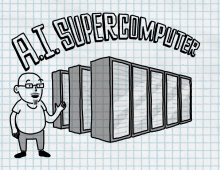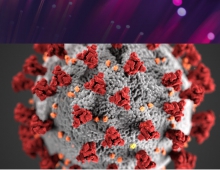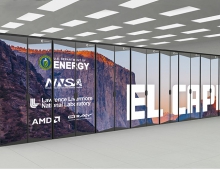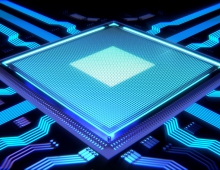
China's Tianhe-2 Remains The World's Faster Supercomputer
For the sixth consecutive time, Tianhe-2, a supercomputer developed by China’s National University of Defense Technology, has retained its position as the world’s No. 1 system, according to latest edition of the TOP500 list of the world’s most powerful supercomputers. Overall, change at the top of the list is again minor, with only two new systems in the Top 10 -- the Trinity supercomputer built by Cray and jointly deployed by the Department of Energy’s (DOE) Los Alamos and Sandia national laboratories, and the Hazel-Hen system built by Cray and installed at the HLRS - Höchstleistungsrechenzentrum Stuttgart in Germany.
According to the list, China nearly tripled the number of systems, while the number of systems in the United States has fallen to the lowest point since the TOP500 list was created in 1993. China is also carving out a bigger share as a manufacturer of high performance computers with multiple Chinese manufacturers becoming more active in this field.
Tianhe-2, which means Milky Way-2, led the list with a performance of 33.86 petaflop/s (quadrillions of calculations per second or Pflop/s) on the Linpack benchmark. Keeping its hold on the No. 2 spot is Titan, a Cray XK7 system installed at DOE’s Oak Ridge National Laboratory. Titan, the top system in the United States and one of the most energy-efficient systems on the list, achieved 17.59 petaflop/s on the Linpack benchmark.
The only new entries in the Top 10 supercomputers on the latest list are Trinity at No. 6 and Hazel-Hen at No. 8. Trinity is a Cray XC system which has 301,056 cores and achieved 8.1 Pflops/s. Trinity is managed and operated by Los Alamos National Laboratory and Sandia National Laboratories under the Alliance for Computing at Extreme Scale (ACES) partnership. Hazel-Hen is also a Cray XC system installed in Germany at the HLRS - Höchstleistungsrechenzentrum Stuttgart -- and features 185,088 cores and achieved 5.6 Pflop/s.
Among the significant changes to this list from the July 2015 list is the sharp decline in the number of systems in the United States, now at 200. This down from 231 in July and is the lowest number of systems installed in the U.S. since the list was started in 1993.
The European share has fallen to 108 systems compared to 141 on the last list and is now lower than the Asian share, which has risen to 173 systems, up from 107 last time.
In Asia, China made a great leap to 109 systems, nearly three times the 37 the country had on the previous list. Japan’s share dropped slightly to 36 systems, compared to 40 last time.
China’s role in high performance computing is also increasing in the manufacturing arena. Following its acquisition of IBM’s x86 business last year, Lenovo now has 25 systems in list, up from just three systems on the July 2015 list.
At the same time, Cray Inc., a company long associated with supercomputers, is on a resurgence and emerges in the latest list as the clear leader in performance, claiming a 24.9 percent share of installed total performance (up from 24 percent). IBM takes the second spot with a 14.9 percent share, down from 23 percent last July. Hewlett Packard is third with 12.9 percent, down from 14.2 percent six months ago. Thanks to three system from China’s National University for Defense Technology (Tianhe-2, Tianhe-2 LvLiang, and Tianhe-1A), China now contributes 9.2 percent of the total performance of the list, down from 10.9 percent.
The No. 1 system, Tianhe-2, and the No. 10 system, Stampede, use Intel Xeon Phi processors to speed up their computational rate. The No. 2 system, Titan, and the No. 7 system, Piz Daint, use NVIDIA GPUs to accelerate computation.
A total of 104 systems on the list are using accelerator/co-processor technology, up from 90 in July 2015. Sixty-six of these use NVIDIA chips, three use ATI Radeon, and there are now 27 systems with Intel’s Xeon Phi processors. Four systems use a combination of Nvidia and Intel Xeon Phi accelerators/co-processors.
An analysis of the latest TOP500 list will be presented Tuesday, Nov. 17, at the SC15 conference on high performance computing and networking in Austin, Texas.




















